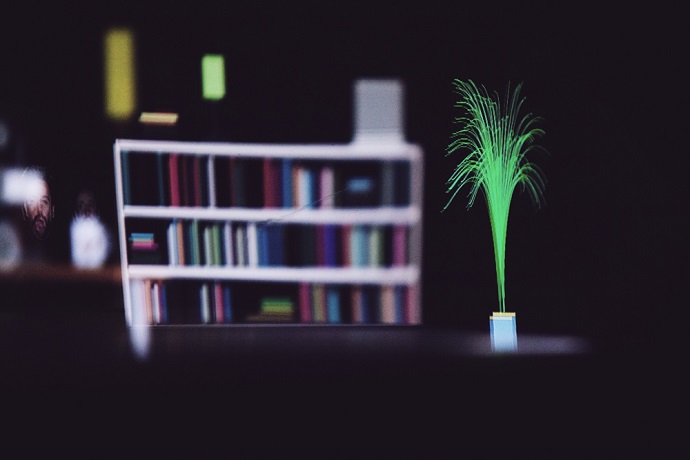
Photo: Robert McFadzean
Centre for Contemporary Arts, Glasgow
If mysticism usually involves some element of kitsch – by no means a bad thing – then invoking mysticism without a shared sense of collective meaning renders that kitsch somewhat empty. The first part of this enticing show of exploratory new music from Cryptic Nights was a 45-minute representation of mysticism in David Fyans’ performance-installation, The Somnambulist’s Field Guide.
A projection of black ripples on an eerie green background was encircled by a line of fine sand, or perhaps salt, marking the centre of the darkened performance space. Fyans himself sat at a table of electronics, carefully pacing an episodic soundscape of murky, disguised sounds amid analogue tones and sound effects. It was an absorbing experience and created a trajectory that was by turns harmonic, rhythmic and noisy. It is worth noting, however, that aesthetically Fyans’ piece was strikingly reminiscent of Andrei Tarkovsky’s 1978 film Stalker.
As is unfortunately often the case, it is Fyans’ accompanying programme note that slightly skews the work itself, justifying what is essentially a slight but enjoyable installation by claiming that it ‘gives you the opportunity for personal and collective exploration […] and the memories or associations they arouse.’ The Somnambulist’s Field Guide is hardly unique or generous in granting us this common opportunity. Indeed, some of the audience members seated casually on the floor and chatting intermittently couldn’t stop me from thinking we were in a sauna rather than a meditation tank. And, at that, a sauna run by Carl Jung.
By contrast, the simple joys of curiosity and play were self-evident in Timothy Cooper’s Mechanical: an interactive installation involving all sorts of mechanical sounds generated by broken old bicycle parts. This was quite the crowd-pleaser, bringing out a seemingly endless enthusiasm for the fun, quirky and delightful. William Aikman’s interactive piece Self Portrait as a Musical Instrument was a thought-provokingly surreal end to the evening: sitting in front of a screen wearing headphones, audience members could move their hands to direct groups of Aikman’s heads around a domestic living room space, with corresponding out-of-tune harmonies. Inexplicable and mildly disturbing, this Self Portrait will either stay with you or leave you cold. ![]()